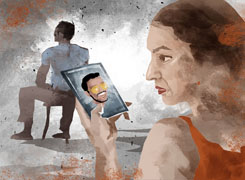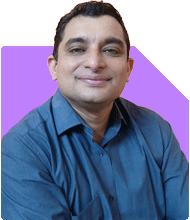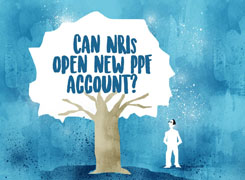Will I be a crorepati after 5 years?
Ramalingam Kalirajan |10902 Answers |Ask -Follow
Mutual Funds, Financial Planning Expert - Answered on Oct 23, 2024
He has an MBA in finance from the University of Madras and is a certified financial planner.
He is the director and chief financial planner at Holistic Investment, a Chennai-based firm that offers financial planning and wealth management advice.... more

My age is 54. I have 4 SIPs now and invest Rs 1000 in each SIP, i.e., total 4000 per month. How much can I expect to warn after 5 years?
Expected Returns After 5 Years
When investing in mutual funds, the returns you get depend on various factors. The type of funds, market conditions, and even the fund manager's expertise play a role. For your investment, let’s assume a moderate annual return of 10% to 12%, which is typical for well-managed equity mutual funds. Over five years, with Rs. 4,000 per month, your investment could grow into a substantial amount.
Let’s break this down:
You are contributing Rs. 48,000 each year (Rs. 4,000 x 12 months).
Over five years, your total contribution will be Rs. 2,40,000.
With compounding and assuming a 10%-12% return, the value of your investment could increase significantly.
Though these returns are not guaranteed, the longer-term market averages suggest this is a reasonable expectation for equity-oriented SIPs.
Impact of Market Conditions
The market fluctuates due to various reasons. Over a shorter period like five years, equity markets can sometimes experience volatility. But remember, SIPs help in averaging out the cost by buying more units when the market is low and fewer when the market is high. This rupee-cost averaging helps in reducing risks associated with market timing.
You can expect fluctuations, but patience is key.
The Power of Compounding
The longer you stay invested, the more you benefit from compounding. Compounding is like earning interest on your interest. While five years is not a very long period, the effect of compounding will still be noticeable. Your SIPs will accumulate returns, and the longer they stay invested, the more these returns compound. This makes mutual fund investments through SIPs an efficient way to grow wealth over time.
Importance of Diversification
You have diversified your investments across four different SIPs, which is commendable. Diversification reduces risk as it spreads your investments across different sectors or fund categories.
However, it is important to make sure that the funds you have selected complement each other. Too much overlap in the types of funds could reduce the benefits of diversification. If you're unsure about this, it might be a good idea to consult a Certified Financial Planner (CFP) who can guide you in balancing your portfolio.
Active Funds vs Index Funds
It’s crucial to understand the distinction between actively managed funds and index funds. Actively managed funds have a fund manager who makes investment decisions to outperform the market. These funds can generate higher returns if managed well, though they come with slightly higher fees.
On the other hand, index funds simply track a market index like the Nifty or Sensex. While index funds have lower fees, they are passive and might underperform in volatile markets because they don’t try to beat the market.
For someone with a five-year horizon like you, actively managed funds might offer better returns. They provide more flexibility in adjusting to market conditions, and their historical performance often justifies the slightly higher cost.
Direct vs Regular Funds
If you're investing in direct mutual funds, they might seem attractive because of lower expense ratios. However, direct funds come without the guidance of a Certified Financial Planner or a mutual fund distributor (MFD). This means you are left to manage your portfolio, select funds, and monitor performance by yourself.
In contrast, regular funds come with the expertise of a CFP or MFD who ensures your portfolio is optimized. While the expense ratios are slightly higher, the value added by expert advice can often lead to better returns. So, if you feel uncertain about handling your investments, consider switching to regular funds to get personalized support.
Taxation of Mutual Funds
It’s important to factor in the tax implications of your mutual fund investments. The new mutual fund capital gains taxation rules are as follows:
For equity mutual funds, long-term capital gains (LTCG) above Rs. 1.25 lakh are taxed at 12.5%. Short-term capital gains (STCG) are taxed at 20%.
For debt mutual funds, both LTCG and STCG are taxed as per your income tax slab.
Since your horizon is five years, the equity investments will likely fall under the long-term category, and you should plan for any tax liabilities accordingly.
This tax burden can impact your final returns, so it’s wise to keep a portion of your gains aside to manage tax payments.
Review Your Investment Strategy
Since you are in the pre-retirement phase, reviewing your risk tolerance is important. While equity investments tend to offer higher returns, they come with higher risk. If you are comfortable with the volatility for the next five years, continuing with equity-oriented SIPs makes sense.
But, if you're looking for more stable returns, consider increasing your allocation to hybrid funds or conservative equity funds that balance risk and reward.
Emergency Fund Considerations
As you approach retirement, you should ensure that you have an emergency fund in place. This fund should cover at least 6-12 months of living expenses. Having this reserve ensures that you won’t need to dip into your investments in case of an emergency.
Your SIP investments should remain untouched for wealth creation, and having liquid funds separately will give you peace of mind.
Monitor Your Progress
Over the next five years, it's essential to monitor your SIPs periodically. While SIPs are designed to be long-term investments, keeping an eye on their performance ensures they are on track. You don’t need to check daily, but a review every 6-12 months will help you see if the funds are performing as expected.
Final Insights
You are on a good path with your SIPs. A steady Rs. 4,000 monthly investment is likely to yield good returns over the next five years, assuming moderate market growth.
However, consider revisiting your overall financial plan. Ensure that your investments align with your goals and risk appetite. You might want to increase your SIP amount or diversify further, depending on your future needs and retirement plans.
Keep in mind that actively managed funds, when chosen wisely, can offer better growth prospects than index funds. And while direct mutual funds seem cheaper, the expertise of a CFP can bring long-term value that outweighs the higher fees of regular funds.
Best Regards,
K. Ramalingam, MBA, CFP,
Chief Financial Planner,
www.holisticinvestment.in
https://www.youtube.com/@HolisticInvestment
You may like to see similar questions and answers below
Ramalingam Kalirajan |10902 Answers |Ask -Follow
Mutual Funds, Financial Planning Expert - Answered on Apr 12, 2024
Ramalingam Kalirajan |10902 Answers |Ask -Follow
Mutual Funds, Financial Planning Expert - Answered on May 01, 2024
Ramalingam Kalirajan |10902 Answers |Ask -Follow
Mutual Funds, Financial Planning Expert - Answered on May 09, 2024
Ramalingam Kalirajan |10902 Answers |Ask -Follow
Mutual Funds, Financial Planning Expert - Answered on May 09, 2024
Ramalingam Kalirajan |10902 Answers |Ask -Follow
Mutual Funds, Financial Planning Expert - Answered on Oct 16, 2024
Anu Krishna |1749 Answers |Ask -Follow
Relationships Expert, Mind Coach - Answered on Dec 17, 2025
Anu Krishna |1749 Answers |Ask -Follow
Relationships Expert, Mind Coach - Answered on Dec 17, 2025
Radheshyam Zanwar |6748 Answers |Ask -Follow
MHT-CET, IIT-JEE, NEET-UG Expert - Answered on Dec 17, 2025
Anu Krishna |1749 Answers |Ask -Follow
Relationships Expert, Mind Coach - Answered on Dec 17, 2025
Dr Shakeeb Ahmed Khan |184 Answers |Ask -Follow
Physiotherapist - Answered on Dec 17, 2025
T S Khurana |538 Answers |Ask -Follow
Tax Expert - Answered on Dec 17, 2025
T S Khurana |538 Answers |Ask -Follow
Tax Expert - Answered on Dec 17, 2025
Janak Patel |72 Answers |Ask -Follow
MF, PF Expert - Answered on Dec 17, 2025
Ramalingam Kalirajan |10902 Answers |Ask -Follow
Mutual Funds, Financial Planning Expert - Answered on Dec 17, 2025
Samraat Jadhav |2511 Answers |Ask -Follow
Stock Market Expert - Answered on Dec 17, 2025




























